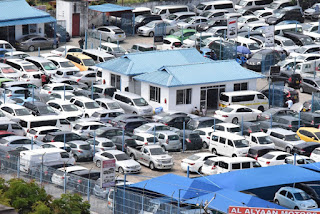State eases 8-year rule as 12,000 units arrive late
The government has taken a soft approach on the eight-year rule for used vehicles that are coming in late, with more than 18,000 units arriving later next year.
According to Industrialization Trade and Enterprise Development CS Betty Maina ,car importers should advise on when vessels carrying 2013 units are expected to arrive, to allow for clearance arrangements.
This is from a previous hardstand, in November, where the CS had remained firm that import rules must be followed, arguing that all importers had been advised to ensure vehicles arrive before the December deadline.
“All importers were advised t ensure vehicles get in before December 31, 2020. They were advised in September to ensure goods arrived by December,” CS Betty had told the Star.
Kenya Bureau of Standards (Kebs) on December 14 announced that all 2013 units registered vehicles must arrive in the country by December 31.
This is under the regulations where Kenya only allows importation of used cars of a maximum of eight years since the first date of registration.
“Any vehicle registered in 2013 arriving after December 31 will be deemed not to comply with the standards and shall be rejected at the importers expense,” Kebs managing director Bernard Njiraini said.
In a new twist of events, CS Betty has softened the ministry’s stand but insisted all units must have been inspected on time.
“Can they advice when vessels will arrive for vehicles inspected on time,” the CS said.
Importers are also expected to share details of units that were inspected on time by Kebs appointed agents in the country of origin, and details of the shipment.
Through the Car Importers Association of Kenya (CIAK), importers and dealers had this month indicated more than 30,000 units risk being locked out for arriving late.
They have been lobbying the ministry and Kebs to be allowed to bring in their units until March next year, a move that would create a window to continue importing cheaper 2013 units disguised as delayed.
About 12,000 units arrived between Monday (December 28) and yesterday (December 30), aboard conventional vessels Grand Duke, Morning Pride and Jolly Diamante.
Late arrivals include Freedom Ace and Hoegh Sydney, which are expected to dock in Mombasa on January 2.
The two are expected to arrive with an average 6,000 units each, meaning another 4,000 units will come in later in the month.
Kenya imports between 7,000 and 12,000 used cars a month mainly from Japan (80 per cent), with other markets being United Kingdom, United Arab Emirates, Singapore and South Africa.
The second-hand cars dominate the local market accounting for 85 per cent of Kenya's car purchases, with an annual import of above 86,000 units.
The last time the eight-year rule caught up with importers was in 2014 when more than 2,000 used motor vehicles registered in 2006 were locked out of the country, leading to losses of millions of shillings by dealers and individual importers.
From tomorrow (January 1), only 2014 made and registered units are allowed into the country by law.
The government has been seeking to reduce the age limit to five years to promote local assembling and address emission concerns blamed on combustion in old cars.
President Uhuru Kenyatta this month affirmed his support for the growth of local industries, encouraging local motor vehicle assembling as opposed to imported used cars, which he said: “have flooded the country.”
He spoke during the commissioning of the local assembly of the Malaysian Proton Saga saloon cars at the Associated Vehicle Assemblers (AVA) in Miritini, Mombasa County.
“We want to revive the automotive industry in Kenya. It used to be at one stage that the majority of vehicles that used to traverse our roads were actually assembled by our own young Kenyans,” the President pointed out.




.jpg)


.jpg)

Post a Comment